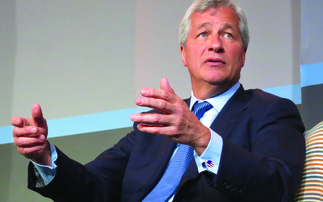Reflecting on recent market movements
The initial sell-off in March was indiscriminate, but markets have regained some poise of late and started to distinguish between the winners and losers.
Notably, however, the bear market hasn't brought a change of leadership. The winners of the last decade are deemed winners in this stay-at-home economy; Amazon, Netflix, Microsoft etc. Related to this, the US market has continued to perform better than the rest of the work. It is down ‘only' 15% year-to-date vs. Europe and the UK which have suffered almost twice that fall.
In terms of fund performance, it has been broadly as expected - we offered some protection in the market fall and we've given up very little as the market has rebounded. The fund is significantly ahead of the MSCI ACWI year-to-date and that's been achieved despite a relatively low allocation to the US and of course a dividend/value tilt which has been a significant stylistic headwind. So overall - while we'd always like to do better - we're reasonably pleased with how the strategy has behaved.
Subtle changes to portfolio positioning
Turnover in the Fidelity Global Dividend Fund for Q1 was 6% of which 4% was in March - so we're not talking about a wholesale change to the shape of the portfolio - but we did react during that volatile period in March to opportunities.
For example, in the first two weeks of March both the US exchange CME (which we didn't own) and the US regional bank USB (which we did) fell 35%. USB suffers from the direct impact of lower interest rates but more importantly is facing a potential credit cycle as unemployment and insolvencies rise dramatically. CME on the other hand is a monopolistic exchange with a strong balance sheet, robust fundamentals, 100% cash conversion with much of that cash returned as a dividend (they don't do buybacks).
The point being - they were both marked down to a similar extent despite this quite stark contrast in outlook. This gave us the chance to take a position in CME funded from USB - so far, it has worked well with CME up 25% from purchase price while USB has traded sideways.
Assessing the impact on dividends
In a global context, European dividends are definitely most at threat. However, while the European market yields roughly twice that of the US, ‘total yields' - dividends and buybacks as a percentage of equity value - have been remarkably similar over the last few years. So, in the US I wouldn't be surprised if we see a fall of 50% or more in the buyback component of capital return.
What makes it more challenging today is the fact that it's not enough to work out whether a company can and is willing to pay a dividend - you also need to consider the political, regulatory and societal pressures on dividends.
Looking at the portfolio, I see two pockets of risk. Firstly, companies we own where business has effectively come to a standstill under lockdown - concessions (toll roads, airports) and exhibitions which is around 4% of the overall portfolio. In a typical recession, these companies tend to be quite resilient but we're now seeing revenues down 80-90%. I think it's prudent to assume that these companies will not pay a dividend until the economy is back up and running.
Secondly, we hold some companies which are able and willing to pay a dividend but where there is the risk of political or regulatory intervention. Over the next month or so we will get a much better sense of where we are. For now, we take some comfort that they are still openly committed to paying, but things can change quickly.
All in all, dividend progression from the portfolio this year will ultimately depend on the length of lockdown. If economies reopen in H2, it's feasible that we can grow the distribution but if we're in lockdown for much of the year then a cut becomes much more likely. But we need to be careful to not stretch for an income target and make bad decisions as a result. We want to make sure we maintain the longer-term dividend potential of the portfolio.
Listen to Dan Roberts talk through his latest views and portfolio positioning here.
Fidelity whitepaper: How to think about dividend cuts
A spate of dividend cuts or postponements has raised concerns among investors globally, especially those focused on income strategies. But not all dividend cuts are created equal. Companies are feeling the pressure differently, and their responses are just as varied.
Related fund
Fidelity Global Dividend Fund W-INC-GBP
Fidelity Global Dividend Fund W-ACC-GBP
Benefit from the latest market commentary from Fidelity CIOs and portfolio managers:
- Perspectives: weekly insights from experts spanning the breadth of our investment capability
- Live webcasts: live and interactive webcasts with Fidelity CIOs and portfolio managers
- On-demand webcasts: listen again to any of Fidelity's latest webcast recordings
- Insight emails: sign-up to Fidelity's email newsletters from our investment experts
IMPORTANT INFORMATION
This content is for investment professionals only and should not be relied upon by private investors.
The value of investments and any income from them can go down as well as up so the client may get back less than they invest. Past performance is not a reliable indicator of future returns. As a result of the annual management charge for the income share class being taken from capital, the distributable income may be higher but the fund's capital value may be eroded, which will affect future performance. The fund can use financial derivative instruments for investment purposes, which may expose it to a higher degree of risk and can cause investments to experience larger than average price fluctuations. Changes in currency exchange rates may affect the value of an investment in overseas markets. This fund invests in emerging markets which can be more volatile than other more developed markets. Investments should be made on the basis of the current prospectus, which is available along with the Key Investor Information Document and current and semi-annual reports, free of charge on request, by calling 0800 368 1732. Issued by Financial Administration Services Limited and FIL Pensions Management, authorised and regulated by the Financial Conduct Authority. Fidelity, Fidelity International, the Fidelity International logo and F symbol are trademarks of FIL Limited. UKM0420/31113/SSO/NA












